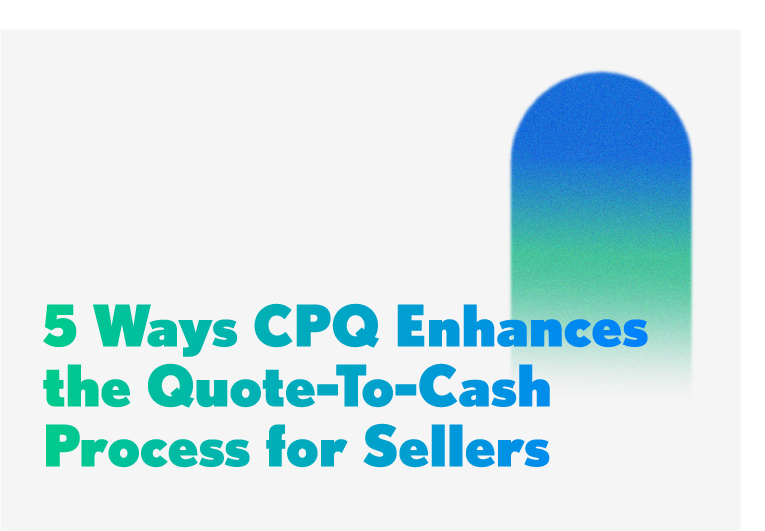A few weeks ago, we here at Logik.io had the distinct pleasure of hosting Erwan Kerebel, Sr. Director of Product Management for Salesforce Revenue Cloud, in discussion with our own Sr. Principal Product Manager, Chris Haussler. Two of the foremost minds in the field of CPQ development and advancement, Kerebel and Haussler lent their combined expertise to address the current sales market, and provide a few friendly warnings.
5 Pitfalls to Avoid When Selecting & Implementing CPQ.
The Webinar proved to be a rousing success with the live audience, and inspired the following expansion of the main items presented across the hour.
If you haven’t had a moment to watch the discussion in its entirety, fear not. 5 Pitfalls to Avoid When Selecting & Implementing CPQ lives on the Logik.io Youtube Channel in the On-Demand Webinars section and is available to view, no registration or payment required. You’re also welcome to continue reading along here as an introduction to their ideas, and check back in with the recording as a follow-up.
As outlined by Kerebel and Haussler, we’ll be taking some time with the following pitfalls:
- Overlooking Administrative Capabilities & Ongoing Maintenance
- Settling For a Subpar User Experience
- Not Considering Multi-Channel Revenue Streams
- Addressing the Inevitable Gaps
- Avoid Lifting & Shifting Legacy CPQ
Before we can get into those examples, though, we need to ensure a common understanding of what exactly CPQ is, why it matters more than ever, and how we approach it in the current market.
Configure, Price, Quote
As a quick review, CPQ stands for “Configure, Price, Quote” and typically refers to software systems that generate quotes and estimates in sales settings. Based on sets of configuration rules, or logic, CPQ accommodates dynamic quote generation based on the configuration of item specifics. With B2B and eCommerce applications, CPQ is a quickly-expanding presence, all but ubiquitous in modern sales environments. One of the most engaging statistics shared in the 5 Pitfalls webinar is that the CPQ market is projected to reach a valuation of $3.9 billion USD by 2026, growing at a rate of 16% YoY.
With CPQ being such a vital part of the enterprise sales tech stack let’s review the five cautions you should keep in mind when evaluating new CPQ solutions for your business, as outlined by the CPQ experts.
Overlooking Administrative Capabilities & Ongoing Maintenance
The main benefit of integrating CPQ into your sales tech stack is the way in which it can synthesize and process all of the information needed to create a complete, accurate sales quote. With any software that supports such a process, there is more than just the end result to consider, as the maintenance and upkeep of these systems can often be complex and tedious. Kerebel and Haussler provide a series of guiding questions you can use to think your way through choosing the right system, especially in regards to the capacities and maintenance requirements for the systems in consideration.
These guiding questions can include:
How are the unique product rules managed?
Remember, the entire purpose of CPQ is to facilitate a navigable, efficient sales experience. If the management requirements for unique product rules take as much time as the system purports to save you, that imbalance is not to be overlooked.
How much custom scripting/coding will be required?
While custom scripting has its time and place, the amount of active labor it requires on the back end can quickly override the productivity value of the system itself.
What will the process for introducing updates or new features look like?
Ideally, rollouts and updates should be a seamless, quick process for both you and your customers. Processing time, edit features and interfacing capacities all play into the overall success of said updates.
Other areas of consideration are the physical teams that will perform system maintenance – Is there an in-house employee whose time will now be wholly dedicated to it? Would an external, specialized management program work in your budget?
Luckily for you, these questions should be easy enough to find answers for with intentional due diligence. Taking the time to genuinely research, engage with demos, and outlining non-negotiables can help you avoid high TCOs and low returns on a mismatched system.
Without the proper forethought, you can find yourself in the driver’s seat of the wrong car before the race even begins. Give yourself and your customers the best chance at success as early on as possible.
Settling For a Subpar Sales User Experience
The CPQ experts on this panel were firm about one aspect of your CPQ evaluation in particular: never compromise on the experience you deliver to your sales reps with CPQ. A known truth, but consistent point of contention across the sales industry, is any given company’s willingness – or refusal – to compromise sales user experience in favor of cheaper solutions, or solutions that might favor the back office users.
Investing in direct tools that empower reps to craft a truly excellent experience will result in the highest returns, while favoring the back office in spite of the sales experience often minimizes your returns.
While it may make sense in a budgeting sense to save money on a system that processes just a tad slower than its next closest alternative, what are the impacts of that lost time, compounded from sale to sale? How many minutes week over week are spent doing nothing more than saving, refreshing and waiting? What could your bottom line look like with all that effort redirected where it matters – the experience?
If you want to be trusted by your ideal client, or appreciated and supported by your sales team, you need to provide them a high-quality, logical experience supported by technology – not hindered by it. Walking them into a subpar experience tacitly enforces an air of disregard, that the midline experience is all they are worthy of getting.
Nothing could, or should be, farther from the ultimate business goal.
Performance and speed comprise the foundation for a successful sales user experience. When one, or both, of these items are placed on the backburner, it does not go without detriment.
Haussler explicitly mentions in the webinar that “there is no end to the number of different ways you can basically denigrate performance as a consequence of decisions and trade-offs made during implementation…kind of like death by a thousand cuts.”
Systems that facilitate experiences lacking in guidance and flexibility run sales users straight into a wall, and far away from the realm of the satisfied.
Not Considering Multi-Channel Revenue Streams
Sweeping across every corner of tech, the need for “consumerization” of sales experiences is rising rapidly. What we mean by “consumerization” is that B2B buyers now expect to buy products and services with the same ease they are able to buy consumer products. Consumer desire drives the market, and right now, consumers want the quickest, truest, most comprehensive, low-touch resolution of an experience they can get.
They want their needs, and their needs specifically, accommodated without additional delays. The webinar provides some supporting statistics to this nature, indicating that 89% of customers expect brands to offer self-service channels.
The challenge is this: CPQ solutions have traditionally been designed to enable direct sales teams, but were not originally designed to support self-service and eCommerce channels, presenting difficulties for businesses exploring those channels.
Here, a CPQ system that can extend across multiple streams of commerce to create a successful omni-channel experience reduces the business difficulties and enhances both customer experience and product exposure.
With 84% of manufacturers positioning sales of new products as a top priority, creating the easiest path to navigate product options, selections, configurations and final quotes in an omni-channel fashion is well within their best interests.
Addressing the Inevitable Gaps
There is no true silver bullet that can pierce through every issue presented in a complex sales environment, especially when it comes to implementing CPQ. But, that doesn’t mean you can’t find a solution that works for you and your customers. It’s all a matter of mitigating the inevitable gaps in functionalities, and having a clear vision as to where your true priorities lie.
When you have a clear end goal in mind, you can work your way backward to see what sort of system support will be necessary to get you there.
As Haussler said in the Webinar, the ideal CPQ solution is “not only just a fit for purpose…not just an application, but a platform you can build other tools around.” Partnering with a company that comes with a pre-established ecosystem allows you to build out and cover fringe cases with ease, without requiring additional maintenance.
Avoid Lifting & Shifting Legacy CPQ
It’s easy to lean into the familiar. If you already have a legacy CPQ solution established, it makes sense that your first train of thought when upgrading would be to lift the experience and design of your existing system, and create a similar one in the new system.
But, as Kerebel reminds us, “the way your company did business ten years ago is probably very different from the way you are conducting business today.” A legacy system can only undergo so much modification before the balance between maintenance and value starts to shift. In an ever-changing industry, we are beholden to the promise of evolving along with the times. It’s not just what our customers expect, it’s what they deserve.
Innovation in the field is constant, and it is impressive. Kerebel continues, “you will not reach your objectives if you just reproduce what was done before and [don’t] address a few gaps.”
The prescription is clear: Invest in market research to see exactly what options exist to help with the solutions you’re looking to implement. The deeper your understanding of the market, the more you can justify divesting from legacy systems. Plug-and-play customization can address both standard and fringe use cases, leaving room for the rules and nuances of your offerings specifically.
Logik.io Resources
We know that navigating the world of CPQ, specifically when selecting and implementing your best option, comes with notable amounts of time, energy, and resources. Check out the Logik.io Commerce Engine YouTube Channel, and explore the rest of our blog right here at www.logik.io, for industry insights, expert interviews, configuration demos and more.
Our next webinar installment, Omni-Channel Everywhere: How to Evolve Your Sales Strategy with Commerce & CPQ Digital Transformation, is scheduled for Thursday, June 2 at 1p ET. The registration link is currently live, and the webinar will be recorded and distributed via Youtube.


